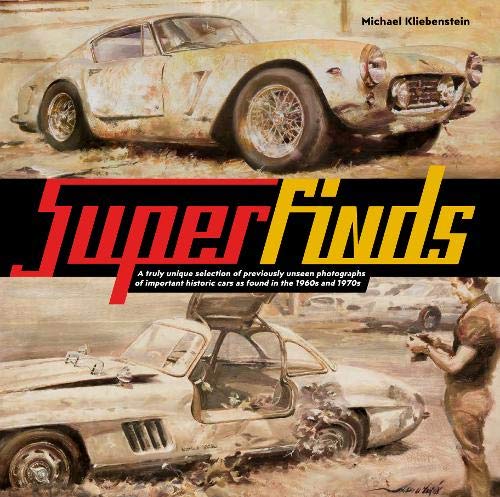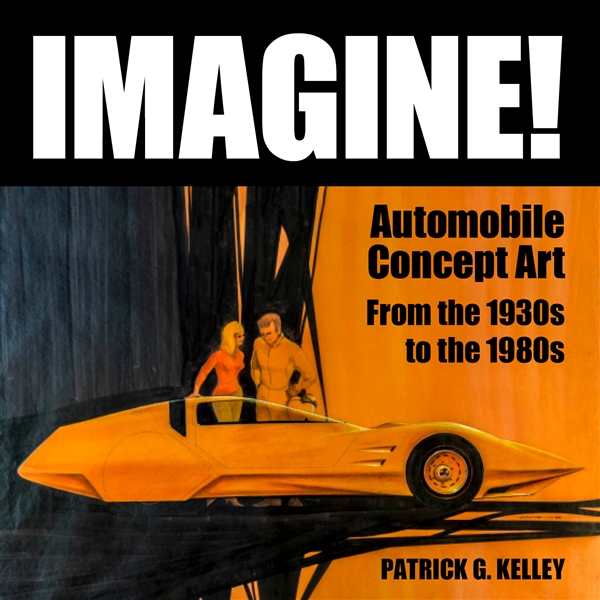
The New York Times bestselling author of Bitter Brew chronicles the birth and rise to greatness of the American auto industry through the remarkable life of Harley Earl, an eccentric six-foot-five, stuttering visionary who dropped out of college and went on to invent the profession of automobile styling, thereby revolutionized the way cars were made, marketed, and even imagined.
Harleys Earl’s story qualifies as a bona fide American family saga. It began in the Michigan pine forest in the years after the Civil War, traveled across the Great Plains on the wooden wheels of a covered wagon, and eventually settled in a dirt road village named Hollywood, California, where young Harley took the skills he learned working in his father’s carriage shop and applied them to designing sleek, racy-looking automobile bodies for the fast crowd in the burgeoning silent movie business.
As the 1920s roared with the sound of mass manufacturing, Harley returned to Michigan, where, at GM’s invitation, he introduced art into the rigid mechanics of auto-making. Over the next thirty years, he functioned as a kind of combination Steve Jobs and Tom Ford of his time, redefining the form and function of the country’s premier product. His impact was profound. When he retired as GM’s VP of Styling in 1958, Detroit reigned as the manufacturing capitol of the world and General Motors ranked as the most successful company in the history of business.
Knoedelseder tells the story in ways both large and small, weaving the history of the company with the history of Detroit and the Earl family as Fins examines the effect of the automobile on America’s economy, culture, and national psyche.

This illustrated history celebrates the 75th and 70th anniversaries of Volkswagen’s two most iconic vehicles, from the first Beetles spearheaded by Ferdinand Porsche in the 1940s to the buses that became synonymous with a generation.
Volkswagen is one of the most beloved brands in motoring history, thanks largely to two instantly recognizable vehicles: the Beetle (a.k.a. Bug) and the Bus. More than 23 million VW Beetles have buzzed into the world since 1945, while the VW Bus presaged the minivan by thirty-plus years. Volkswagen: Beetles and Buses examines and celebrates all aspects of the vehicles and the many cultural associations that have swirled around them for more than seven decades. The diminutive rear-engined and easily mass-produced Beetle became the most popular imported car in America during the 1960s. Its success was due to its familiar face, its wildly clever ad campaigns, and the sheer numbers produced. The equally compact yet spacious Bus (a.k.a. Kombi, Microbus, Type 2, Transporter, and simply “van”) has won millions of fans around the world with its practicality, simplicity, and design.
In this beautifully illustrated and authoritatively written celebration, author Russell Hayes looks back at the vehicles while focusing on the classic air-cooled VWs that ran into the late 1970s. Along the way, readers witness the Beetle and Bus at work and at play and learn about vehicle development and growing roles in popular culture, including star appearances in films like The Love Bug, Little Miss Sunshine, Footloose, Fight Club, The Big Lebowski, and Fast Times at Ridgemont High, as well as television shows like Lost and Once Upon a Time and on the covers of the Beatles’ Abbey Road and Bob Dylan’s Freewheelin’ album. The story is brought up to date with coverage of the New Beetle and plans for the VW Buzz, a modern electric version of the iconic Microbus due in 2022.
Volkswagen: Beetles and Buses deserves a place in the motoring libraries of VW owners, automotive enthusiasts, and those simply interested in pop culture. It’s the ultimate illustrated history of these beloved vehicles.
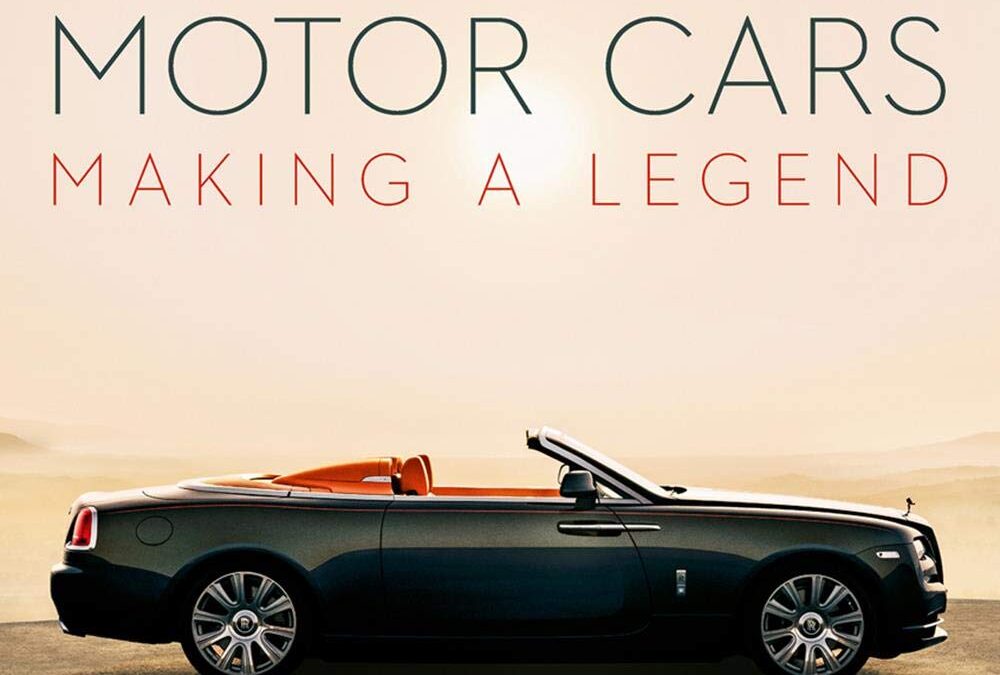
- The most prestigious motor car in the world. The true definition of luxury
- A tour of the Rolls-Royce facility and a unique insight into the manufacturing process
- A stunning collection of cars from the earliest models to those of the modern day
- A compendium of historical Rolls-Royce pictures, many unseen
- A luxurious book, beautifully designed and impeccably produced to the highest standards
- The ultimate Rolls Royce volume
Step inside a world of engineering excellence with this collection, dedicated to Rolls-Royce Motor Cars. The authors were granted unique access by the Rolls-Royce company. Detailed descriptions of the manufacturing process are set against a backdrop of heritage and prestige, including an exclusive showcase of the company’s manufacturing facility and a splendid gallery of Rolls-Royce cars dating back to sketches of work from the 1930s. This collection includes numerous unseen photos of Sir Henry Royce driving early versions of his iconic cars.
A true behind-the-scenes experience, this book introduces the reader to the Rolls-Royce master craftsmen at work. High-quality images and detailed insights reveal the process by which each car is constructed, from the 2019 Ghost Zenith back in time to the 1904 Original. Rolls-Royce opens their archive to reveal a spectacular timeline of design, providing readers with an insight into the world of those who still uphold the words of Sir Henry Royce: “Strive for perfection in everything you do”.
The contents list guides the reader through the complete construction of a car: Design and Customization, Paint and Finish, Chassis Assembly, Woodwork, Leather, Testing, The Spirit of Ecstasy Hood Ornament, and more. With a glimpse at the Rolls- Royce Training Academy and a plethora of featured cars from last year to the start of the last century, this is the ultimate Rolls-Royce collectors’ volume. Featured cars include the new Ghost (2020), the Phantom Tranquility (2019), Phantom Aviator Coupe (2012), the Phantom II Continental (1934) the AX201 Silver Ghost (1907), and many more.
Simon Van Booy is a celebrated Anglo-American author, who has won the Frank O’Connor International Short Story Award. His essays have been published in The New York Times, The Daily Telegraph, The Guardian and more.
Harvey Briggs is the Editor/Publisher of Rides & Drives, a website dedicated to motoring journeys across the world.

Auto Repair For Dummies, 2nd Edition (9781119543619) was previously published as Auto Repair For Dummies, 2nd Edition (9780764599026). While this version features a new Dummies cover and design, the content is the same as the prior release and should not be considered a new or updated product.
The top-selling auto repair guide–400,000 copies sold–now extensively reorganized and updated
Forty-eight percent of U.S. households perform at least some automobile maintenance on their own, with women now accounting for one third of this $34 billion automotive do-it-yourself market. For new or would-be do-it-yourself mechanics, this illustrated how-to guide has long been a must and now it’s even better. A complete reorganization now puts relevant repair and maintenance information directly after each automotive system overview, making it much easier to find hands-on fix-it instructions. Author Deanna Sclar has updated systems and repair information throughout, eliminating discussions of carburetors and adding coverage of hybrid and alternative fuel vehicles. She’s also revised schedules for tune-ups and oil changes, included driving tips that can save on maintenance and repair costs, and added new advice on troubleshooting problems and determining when to call in a professional mechanic. For anyone who wants to save money on car repairs and maintenance, this book is the place to start.
Deanna Sclar (Long Beach, CA), an acclaimed auto repair expert and consumer advocate, has contributed to the Los Angeles Times and has been interviewed on the Today show, NBC Nightly News, and other television programs.

The definitive, fully illustrated celebration of an auto manufacturer that paved its own way by going off-road is now updated to celebrate Jeep’s 80th anniversary.
Few American vehicles, or vehicles made anywhere else in the world for that matter, are as universally iconic as the Jeep. From olive drab WWII military relics to the beloved Wrangler with its rear-mounted spare tire, open-air design, and telltale roll cage, the Jeep is a true classic.
In Jeep: Eight Decades from Willys to Wrangler, automotive writer Patrick R. Foster chronicles Jeep vehicle design and production from the beginning of World War II to present. Beginning with the Jeep as a crucial component of the American war fleet, Foster expertly recounts the corporate shifts, financial struggles and successes, close calls, and, above all, the enduring machines that have carried Jeep from the early 1940s to its triumphant role as a modern-day embodiment of American perseverance.
More than 200 color and black-and-white historical photos and period advertisements complement his expertly written narrative of Jeep’s entire history, now updated to include five years of new model editions and prototypes, its return to the pickup market, and recent stunning marketplace successes. The resulting book reminds us that sometimes the road less traveled was just waiting for the right truck.

The cars of the 80’s, and 90’s are often remembered as slow, unsophisticated, or boring. But during this time many unique, beautiful, and (sometimes) awesome cars emerged as engineers, designers, and industrialists worked to bring their dreams to reality. Cars such as the iconic Delorean, the flamboyant Ferrari Testa Rossa, the game-changing Acura NSX, and more are represented in this book as bold works of art. Additionally, many work-in-progress images offer glimpses into the creative process. The illustrations in this book were created digitally using Adobe Sketch, Illustrator, and Photoshop.
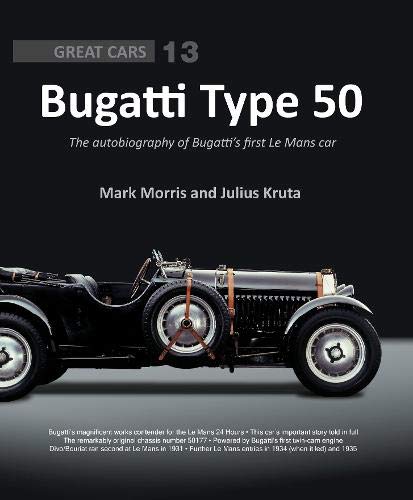
Launched in 1930, the Bugatti Type 50 heralded a new era with the introduction of the Molsheim marque’s first twin-cam design, a supercharged 4.9-litre straight-eight engine of prodigious power. At a time when brute force was needed to win the Le Mans 24 Hours, a competition version was developed and three such Type 50s took part in 1931. The car around which this book is focused, 50177, was leading the famous endurance race when the team withdrew it owing to tyre failures that had afflicted the sister cars, causing one to crash heavily at high speed.
The fascinating story of 50177, and the Type 50 in general, is told in this brilliantly researched and superbly illustrated book in the Great Cars series. Introductory chapters explain the economically perilous world of 1931, the genius of Ettore and Jean Bugatti, the bloodline of large-capacity Bugatti engines, and the Type 46 from which the Type 50 was derived. There follows an in-depth exploration of the Type 50’s design and development, including the Miller inspiration behind its twin-cam engine.
The four Le Mans races in which Type 50s took part form the core of the book and tell a story of promise unfulfilled. The subject car, 50177, raced three times, in 1931 as a works entry with race no. 5 (driven by Albert Divo and Guy Bouriat) and in 1934 and 1935 with works assistance as no. 2 (driven by Pierre Veyron and Roger Labric). A section about the drivers presents illustrated biographies of the four men who raced 50177 as well as the four others in the 1931 works team — Louis Chiron and Achille Varzi in no. 4 and Maurice Rost and Count Caberto Conelli in no. 6. Post-war, three-time Le Mans winner Luigi Chinetti bought 50177 in 1949 and took it to America, where it spent nearly 50 years with five different owners. The last of them was Miles Coverdale, a passionate Bugatti collector who kept the car for 23 years and uncovered much of its history through correspondence with former works mechanics, notably Robert Aumaître.
Co-authors Mark Morris and Julius Kruta, wellknown in the Bugatti world for their immense knowledge and enthusiasm, present a wealth of fresh information and illustration in this fine book.

This beautifully designed and illustrated essential guide to the Tour de France from Motorbooks’ Speed Read series will make you an instant expert on its history, its winners and rivalries, the tactics necessary to win it, and the technology of its bicycles.
Le Tour has sometimes been called “chess on wheels” because of the complicated strategies used by the race’s 22 teams and 176 riders. This book—written by award-winning cycling journalist John Wilcockson, who has covered the Tour 45 times—will help you understand those tactics, along with informing you about the race’s century-plus history, its famed winners and rivalries, and the technology that has gone into creating the modern racing bicycle and determining how today’s athletes train.
Among the questions answered are:
- Who owns the Tour?
- How are the course’s 21 stages selected?
- What are the most famous mountain climbs?
- How is the overall winner determined?
- What is a peloton, a soigneur, or an echelon?
- How big are the prizes?
- What are time bonuses?
- Who was the first American to compete in the Tour, and who was the first one to win it?
- How fast do the racers go down mountain descents?
- What speeds can the riders reach in sprint finishes?
- Why are the teams known by the names of their sponsors and not their countries?
- What do the riders eat, and where do they sleep every night?
- What are all those motorcycles doing among the cyclists?
- How do the organizers deal with doping scandals?
- And is it true that, one year, the top four finishers were all disqualified?
You will find the answers to all these questions, and many more, in this informative, beautifully illustrated, fun-to-read book: Speed Read Tour de France.

Discover rallies through the men, the cars, the races, and the events that have made history. Miki Biasion, one of the most popular drivers in the history of Italian motor racing and two-time World Rally champion and winner of the legendary Safari Rally in Kenya, with competence and passion guides the reader on a fascinating journey through the specialities of the great road races, from the past and present leading drivers to less known aspects and facets. Designed and created frame by frame like it was a documentary, the book “Rally avventure senza tempo” is like a special and original portrait, a unique anthology of the most authentic motor races, where a man does not only measure himself against competitors and the stopwatch, but also bravely defies the elements that are sometimes hostile. Thanks to the iconography (including over 400 high-quality artistic and historical images, which were chosen from among three thousand shots) the reader can live the timeless charm of rallies in a constant and suggestive succession of past and present. Topic after topic, Miki Biasion describes the evolution of rally with plenty of human and sport details, and highlights the drivers and the cars that left an indelible mark in the hearts of rally fans. “Rally avventure senza tempo” thus becomes a way for this great Italian champion to pay tribute to a unique speciality in the international motor-racing panorama, which he never stopped loving.
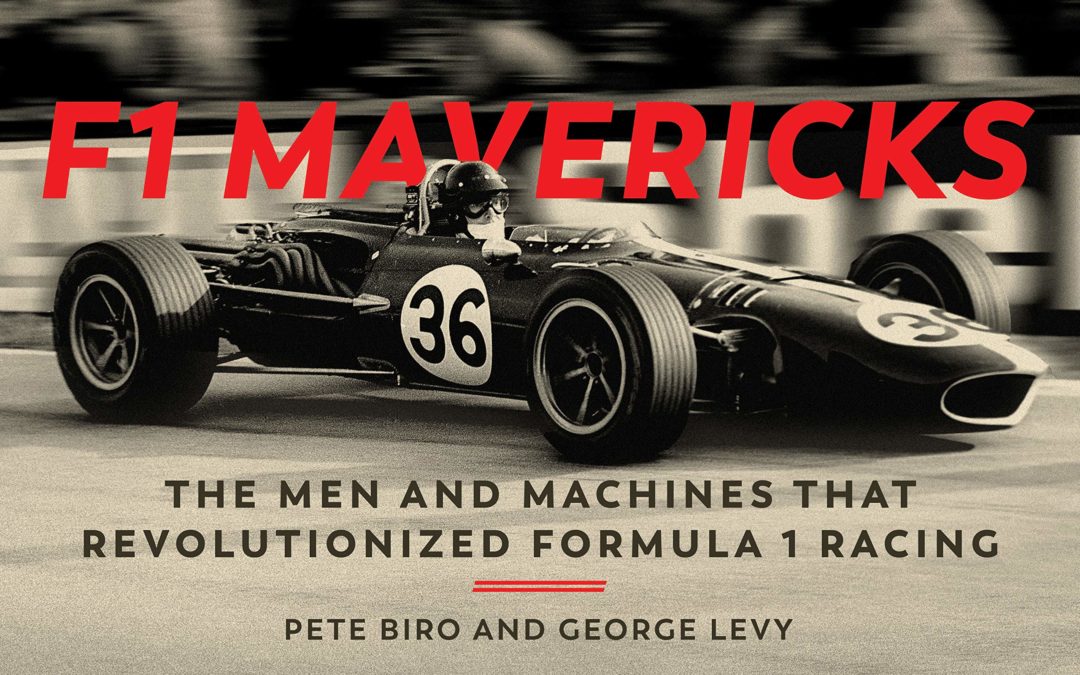
F1 Mavericks is the story of the grandest, most influential, and most fondly remembered era in Formula 1 racing as seen through the lens of master motorsports photographer, Pete Biro.
The period from 1960 to 1982 saw the greatest technological changes in the history of Formula 1 racing: the transition from front engines to rear engines, narrow, treaded tires to massive racing slicks, zero downforce to neck-wrenching ground effects–and, of course, a staggering increase in performance and reduction in lap times. In short, the Maverick Era saw the creation of the modern Formula 1 car.
This is also the time when legendary names who defined F1 were out in full force: Jim Clark, Jack Brabham, Dan Gurney, Sir Jackie Stewart, Graham Hill, Niki Lauda, James Hunt, Bruce McLaren, Jody Scheckter. We’ll see and meet all of them. But F1 Mavericks also focuses on the maverick designers and engineers behind the cars–men like Colin Chapman, Mauro Forghieri, Sir Patrick Head, Maurice Philippe, Gordon Murray, Robin Herd and many others. We’ll hear directly from many of them, including a foreword from 1978 F1 World Champion, Mario Andretti and afterword from the late three-time champion Niki Lauda.
Every chapter is a photographic account of important races throughout the period, supplemented with sidebars featuring key designers and technologies, like wings, ground effect, slick tires, turbochargers, and the Brabham “fan” suction car. F1 Mavericks is an international story, and includes designs from Japan (Honda), Britain (McLaren, Tyrrell, Cooper, BRM) Italy (Ferrari, Maserati, Alfa Romeo), France (Matra, Ligier, Renault), Germany (Porsche, BMW) and the United States (Eagle, Shadow, Penske, Parnelli).
Strap yourself in for the story of the greatest era in Formula 1 racing–it’s all here in F1 Mavericks.
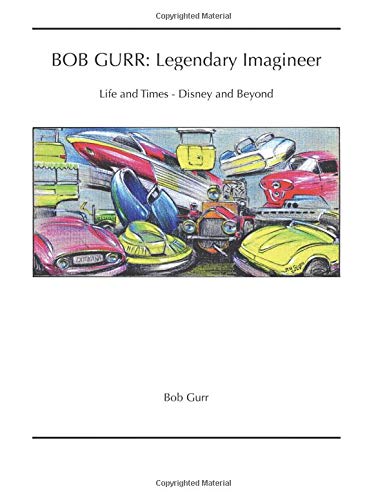
SIGNED
Life and Times – Disney and Beyond
Legendary Imagineer is a companion publication to DESIGN: Just for Fun,which is focused primarily on the major projects where Bob was the principal designer. It includes highlights of Bob’s childhood thru high school,which established the basic approach to his philosophy of design and to his passions for life experiences.BOB GURR: Legendary Imagineer probes deeper into his life and times.Starting with a detailed family genealogy, which was chronicled in his grandmother’s journal, compiled over a 53-year span of her life documenting the family history from 1635 thru 1953. While a few more of his projects are described, the primary tales that Bob weaves are about the passions and adventures in his life that the reader might find most interesting, quite beyond the general public knowledge of his connection with Walt Disney.These “tantalizing” tales explore his worlds of aviation, especially his fifty years of flying gliders. Automobiles and auto racing, historic auto collecting, and World travels are his passion. Photography, meteorology, and earth sciences have always been subjects of his curiosity. You’ll learn about his philosophies of living a happy and healthy life, such as mountain biking, starting at age 68when most folks just stay retired. Bob typically is active with perhaps fifty public appearances each year, enjoying the sharing of personal Walt Disney stories. BOB GURR: Legendary Imagineer is the story of a life well lived.

Spacecraft takes a long look at humankind’s attempts and advances in leaving Earth through incredible illustrations and authoritatively written profiles on Sputnik, the International Space Station, and beyond.
In 1957, the world looked on with both uncertainty and amazement as the Soviet Union launched Sputnik 1, the first man-made orbiter. Sputnik 1 would spend three months circling Earth every 98 minutes and covering 71 million miles in the process. The world’s space programs have traveled far (literally and figuratively) since then, and the spacecraft they have developed and deployed represent almost unthinkable advances for such a relatively short period.
This ambitiously illustrated aerospace history profiles and depicts spacecraft fromSputnik 1 through the International Space Station, and everything in between, including concepts that have yet to actually venture outside the Earth’s atmosphere. Illustrator and aerospace professional Giuseppe De Chiara teams up with aerospace historian Michael Gorn to present a huge, profusely illustrated, and authoritatively written collection of profiles depicting and describing the design, development, and deployment of these manned and unmanned spacecraft. Satellites, capsules, spaceplanes, rockets, and space stations are illustrated in multiple-view, sometimes cross-section, and in many cases shown in archival period photography to provide further historical context.
Dividing the book by era, De Chiara and Gorn feature spacecraft not only from the United States and Soviet Union/Russia, but also from the European Space Agency and China. The marvels examined in this volume include the rockets Energia, Falcon 9, and VEGA; the Hubble Space Telescope; the Cassini space probe; and the Mars rovers, Opportunity and Curiosity.
Authoritatively written and profusely illustrated with more than 200 stunning artworks, Spacecraft: 100 Iconic Rockets, Shuttles, and Satellites That Put Us in Space is sure to become a definitive guide to the history of manned space exploration.
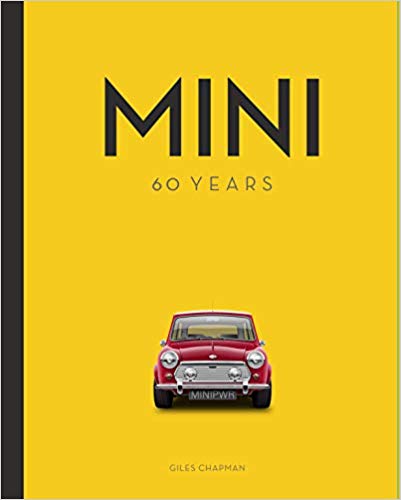
Mini celebrates 60 amazing years of this iconic car, from its revolutionary introduction to the popularity of its new-generation models.
The first two-door Mini, introduced in 1959 and built until 2000, revolutionized automotive design with its innovative front-wheel-drive layout that made the car appear bigger on the inside than the outside. In 1999, the Mini was voted the second most influential car of the 20th century, behind the Ford Model T.
Designed for British Motor Corporation (BMC) by Sir Alec Issigonis and manufactured in England, Australia, Spain, Belgium, Chile, Italy, Portugal, South Africa, Uruguay, Venezuela, and Yugoslavia, the Mini was as successful in competition as it was on the street, winning the Monte Carlo Rally four times from 1964 through 1967.
Originally built by BMC, the Mini’s later parent company, Rover, was acquired by BMW in 1994. In 2000, BMW sold most of the Rover Group but retained the Mini brand. The last and 5,387,862nd original Mini rolled off the production line in October, 2000. In July 2001, BMW launched production of the new-generation of Mini which was soon joined by Countryman, Clubman, convertible, Cooper Works, and numerous special editions. Nearly 20 years later, the new Minis remain as popular as the original from 1959.

Superlight, R300, R400,l R500, R600, Roadsport, Super Seven, Classic Black
Caterham’s success was due, initially, to Colin Chapman’s inspired design and post ‘74 to Graham Nearn’s brilliant development. In common with several other small UK car companies in recent times, Caterham has also gone through a number of ownership changes which has had an effect on the type of models produced and the Caterham Seven arguably reached its peak with the introduction of the ‘R’ Series. This book covers the story of an exciting new generation of Caterham Seven models over a decade which saw the cars achieve speeds and levels of sophistication that Colin Chapman could surely never have dreamed of.
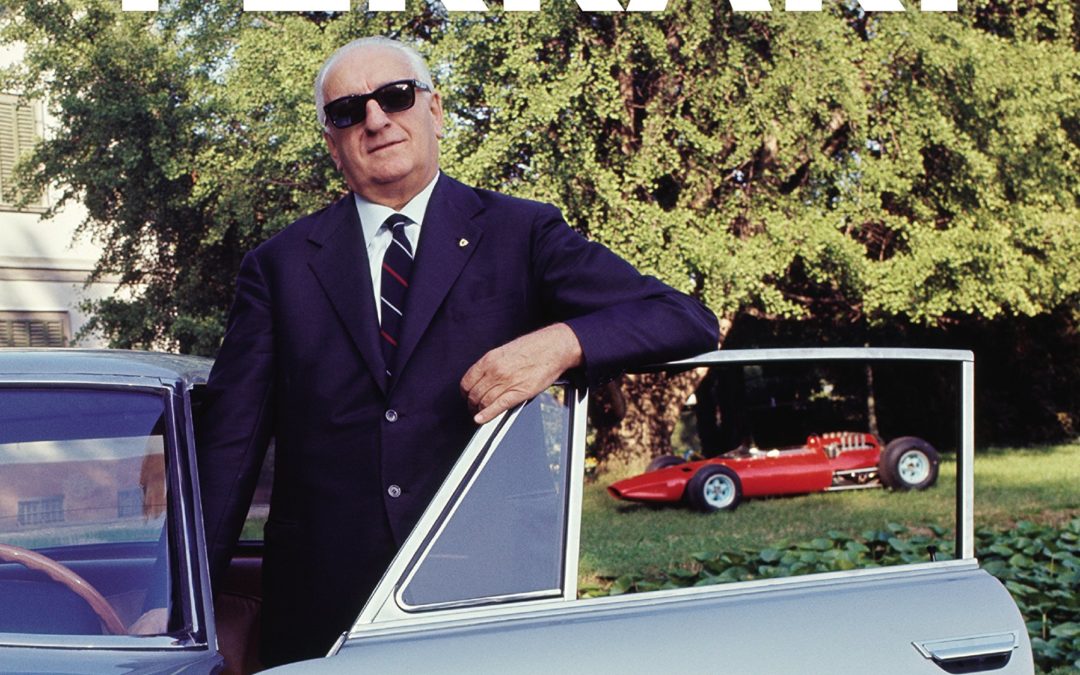
SOLD OUT
When Enzo Ferrari was born in 1898, automobiles were still a novelty in his native Italy. When he died ninety years later, the company he built stood at the top of a global industry, with the Ferrari name universally recognized for performance, racing prowess, and state-of-the-art Italian design. Enzo Ferrari: Power, Politics, and the Making of an Automotive Empire is the definitive account of an epic life.
Drawing on years of original research conducted in Italy and abroad, author and Ferrari insider, Luca Dal Monte, uncovers a wealth of new facts about Enzo’s origins, ambitions, business practices, and private life. The book revisits all the highlights of Ferrari’s rise to greatness: his driving career in the 1920s; his management of racing teams for Alfa Romeo in the 1930s; the launch of his own company and team in the late 1940s, and his unprecedented successes building cars for the road and race track in the following decades. But the book also examines lesser-known and sometimes hidden aspects of Ferrari’s career, from his earliest failed business ventures to his political dealings with Italy’s Fascist government, Allied occupiers, and even Communist leaders. And it lays bare the internal politics of the Ferrari company and team, whose leader manipulated employees, drivers, competitors and the media with a volatile mixture of brute force, paranoia, and guile.
Accompanying the in-depth text are extensive endnotes along with a full bibliography and index. The book is illustrated with four separate sections of photos, exhibits and artefacts, and opens with a foreword by former Ferrari president Luca Di Montezumolo, who previously served as the company’s Formula One team manager.
This is truly the definitive biography of Enzo Ferrari, one that makes previous accounts obsolete. Its depth, scale, and detail make it essential reading for automotive and motorsport enthusiasts. But other readers will be drawn to a sweeping story of Italian life, business, and culture during the 20th century.

Two brands with an established pedigree were brought together in 1945 to form Standard-Triumph International by Sir John Black, then chairman of the Standard Motor Company. The inspired use of the Triumph brand, initially on a conventionally designed saloon, and then on a world beating range of sports cars that immediately gained success in competition, created a strong desire for the brand among enthusiastic motorists who appreciated its style and engineering. Changing use of language led to the Standard brand being discontinued with all models subsequently sold as Triumphs. Triumph & Standard Cars 1945 to 1984 looks at every model produced by the company from 1945 until the end of production in 1984 with the Triumph Acclaim, a car sometimes derided by purists, but the car that paved the way for co-operation between the remains of the former British Leyland behemoth and Honda of Japan. Each model is fully illustrated and described with comprehensive technical detail.

Irish motorcycle racer Charles B Franklin, designer of the Indian Scout and Chief
The Indian has been the iconic image for American big V-Twins down the years, due in no small measure to the motorcycles designed by Charles B Franklin – the Indian Scout and the Indian Chief.
Charles Franklin was born and raised in Ireland where he quickly became involved in motorcycle racing during the pioneer years. He rapidly established himself as Ireland’s first big star of racing and was the first to represent Ireland in international motorcycle competition. In the Isle of Man TT he consistently finished in the top eight, and in 1911 claimed second place, a remarkable achievement in itself. But it was when he moved to Indian in the USA, where he became the Chief Design Engineer, that his genius really flowed. His designs catapulted Indian back into the forefront of motorcycle design in the 1920s and ’30s and his racing engines and motorcycles won much glory for Indian against stiff opposition. Franklin introduced remarkable improvements in side valve combustion chamber design that predated the work of Ricardo. He championed an holistic approach that popularized new features such as the semi unit-construction powerplant, helical-gear primary drive, double-loop full-cradle frames and a host of other improvements to the early motorcycles. Franklin’s Indians not only chronicles his life, but also sheds much new light on the history of Indian motorcycles and the often turbulent times of the Indian Motorcycle Company itself. It’s a much-needed book for all Indian fans and all who love the history of the classic American V-Twins.





